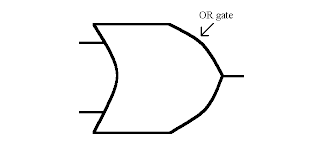STORAGE
The main memory contains 2 different types of memory: RAM & ROM ..
- Random access memory [RAM]
RAM memory is like a blackboard on which you can scribble down notes, read them, and then rub them out when you're finished with them. In the computer, RAM is the working memory. It's a memory device in the form of a collection of integrated circuits. A copy of all the programs that are executed have to be first loaded in RAM. RAM chips can be both read from and written to. by the computer, but their contents are lost when the power is switched off. Such memory is called volatile memory. This is why it is so important to save your work because if the computer gets turned off, RAM will lose all of your work..
So, if none of your work is saved, and it's all on the ram, then when you switch your computer off it's all going to fly with the wind.
For example RAM is used to store: - The program which is running and the data it is using.
- Data being transferred to and from peripherals.
- The contents of the screen.
- Read only memory [ROM]
ROM is good at remembering things, but sucks when it comes to changing the information. So, if you have information on ROM, it's going to be always there, but you can never change it. That's why it's called read only memory. ROM can only be read by the computer .
ROM RAM
1. Can only be read by the 2. Can be both read from and
computer - written to by the computer
2. The contents of the chips are - 2. Contents are lost when the
not lost when the power power is switched off
is switched off [non-volatile] [volatile]
The difference between main memory and backing storage:
Main memory characteristics:
computer - written to by the computer
2. The contents of the chips are - 2. Contents are lost when the
not lost when the power power is switched off
is switched off [non-volatile] [volatile]
The difference between main memory and backing storage:
Main memory characteristics:
- Main memory is fast because it is accessed electronically and no mechanical components are used.
- Main memory is expensive and its storage size on a computer system is usually limited when compared with backing storage.
Backing Storage characteristics:
- Access is much slower than that of the main memory.
- They are non-volatile.
- Usually used for backup of files.
Backing Storage:
Backing storage is used to store data while a computer is switched off. When programs or data are used they are copied into main memory (RAM) for faster access.
Backing storage is used to store data while a computer is switched off. When programs or data are used they are copied into main memory (RAM) for faster access.
A storage medium is like a USB flash drive, floppy disk, magnetic tape ecc. While a storage drive is the piece of equipment which rotates the storage medium and accesses data on it.
Magnetic Media:
- Magnetic Tape:
Narrow plastic ribbon coated with an easily magnetisable material on which data can be recorded. The magnetic tape was very popular in the 1950s and 1960s .Information is recorded in binary form. - Magnetic Discs:
A typical magnetic disk which has 2 sides. Each surface holds data in circular tracks and each track is divided into a number of sectors .
When you format a disk, you will be actually dividing the disk into a number of tracks and sectors and hence creating the addressing system.












